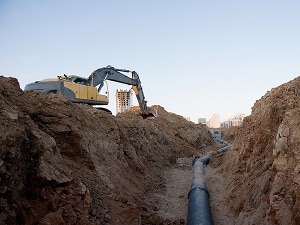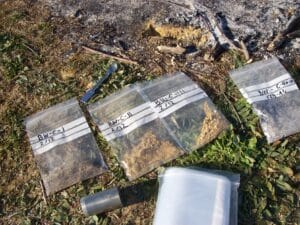Preventing and Detecting the Deadly Threat of Sewer Gas Exposure

You know the smell when you encounter it walking past an urban sewer: it’s the pungent smell of rotten eggs.
The odor is caused by hydrogen sulfide (H2S) or other sulfur compounds, commonly produced by waste material breaking down. H2S can also be produced by many industrial processes, including petroleum refining, agricultural processes, textile, and paper manufacturing, rayon manufacturing, and tanning.
The highly flammable, colorless gas is detectable by smell at low levels. H2S is regulated as a nuisance based on its odor detection level. After prolonged exposure to H2S at lower or higher concentrations, the ability to smell the gas can be lost thru olfactory fatigue or paralysis. At high levels, exposure through inhalation— even as few as one or two breaths — can be deadly.
It’s important to be alert for the symptoms of exposure on the job as well as potential sources. Sewer gas exposure is a hazard that can affect both indoor air quality and the safety of outdoor workers, particularly during construction or demolition work where sewer lines can be exposed or damaged and gas released into a work site.
In 2018, three workers at a construction site in Dallas were exposed to sewer gas after a sewer line rupture in a 30-foot trench where they were working. All three were hospitalized and one died as a result of the exposure.
According to the Occupational Safety and Health Administration (OSHA) and the Bureau of Labor Statistics, sewer gas is the leading cause of workplace gas inhalation deaths in the U.S. with 46 fatalities recorded between 2011 and 2017.
How can you recognize the symptoms of sewer gas poisoning? Here are some symptoms of sewer gas poisoning at high, medium, and low levels:
Symptoms of Sewer Gas Poisoning: High Levels
- Shock
- Convulsions
- Inability to breathe
- Rapid unconsciousness
- Coma, and even death within a few breaths, depending on the concentration
Symptoms of Sewer Gas Poisoning: Moderate Levels
- Severe eye/respiratory irritation (coughing, breathing difficulties)
- Additional symptoms may include headache, dizziness, nausea, vomiting
Symptoms of Sewer Gas Poisoning: Low Levels
- Irritated eyes, nose, throat, and respiratory including teary eyes, cough, shortness of breath
- Some symptoms may include delayed onset
Sewer Gas Sources
Sewer gas can be emitted from a wide variety of sources, including restroom facilities with poor ventilation and plumbing, sewage, and septic system leakage. Bacterial decay in restaurant grease interceptors (grease traps) are also vulnerable to sewer gas fumes. Fertilizers can also contain sulfur compounds and release emissions into the air.
H2S can build up in indoor air, endangering building occupants. The acceptable 10-minute exposure limit of H2S is 10 parts per million (ppm), per OSHA guidelines. Exposure to 100+ ppm of H2S is considered Immediately Dangerous to Life and Health (IDLH).
Best Practices to Prevent the Threat of Sewer Gas Poisoning
Property owners, construction managers, and others working in situations that could lead to sewer gas exposure should follow these best practices, ideally in partnership with a qualified environmental services provider:
- Test the air for hydrogen sulfide gas concentrations
- Keep areas where H2S may build up thoroughly ventilated
- Evacuate the area immediately if H2S exposure is suspected
- Evaluate plumbing, sewage systems, and other potential sources of H2S as part of a thorough Industrial Hygiene Assessment
Environmental Expertise for Worksite Safety
With a wide variety of environmental assessment and mitigation services, in addition to certified Industrial Hygiene specialists and toxicologists, the Omega team can provide the consulting, assessment and remediation services you need to ensure workplace health and safety, and keep construction, renovation or demolition projects safe, compliant and on-track.
We have decades of experience working with engineers, architects, project managers and property managers and work closely with our clients to ensure cost-effective and timely environmental solutions.
Contact Us to Learn More About Environmental Assessment
Follow us on Twitter
Follow us on LinkedIn
Like us on Facebook










